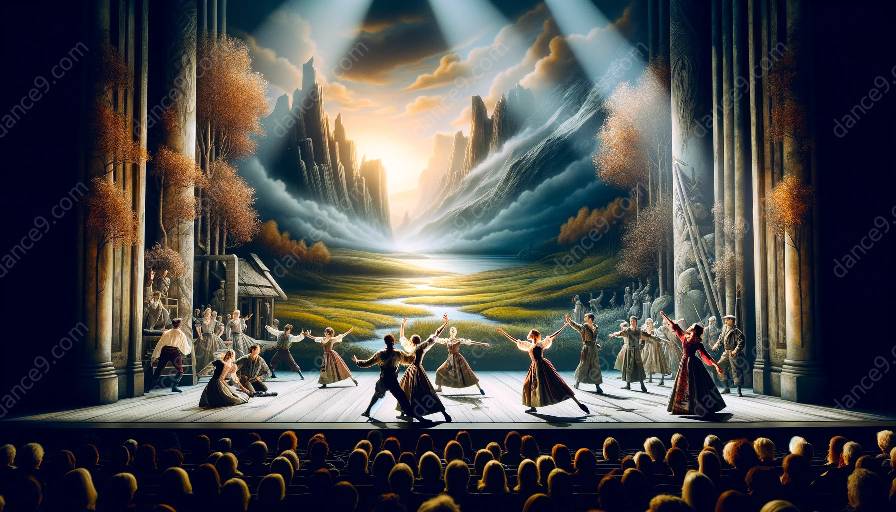Dance is a powerful form of artistic expression that can effectively convey narrative elements through movement. It provides a unique medium for storytelling, allowing dancers to communicate emotions, characters, and plotlines without using words. This topic cluster explores the techniques and principles of narrative choreography and choreography that enable dancers to effectively convey narrative elements through their movements.
Narrative Choreography
Narrative choreography is the art of using dance movements to tell a story or convey a specific narrative. It involves the integration of choreographic elements such as space, time, energy, and form to create a coherent and engaging narrative structure. Dancers utilize various techniques, including symbolism, motifs, and character development, to bring the narrative to life through movement. By merging dance with storytelling, narrative choreography transforms abstract movements into a tangible narrative that captivates audiences.
Techniques for Conveying Narrative Elements
1. Symbolism: Dancers can use symbolic gestures and movements to represent specific ideas, emotions, or events within the narrative. For example, a repeated gesture or motif can symbolize a character's journey or a significant plot point, creating visual cues for the audience to interpret.
2. Character Development: Through movement, dancers can embody distinct characters within the narrative, portraying their motivations, conflicts, and relationships. They use physicality, facial expressions, and movement dynamics to convey the inner worlds of the characters, adding depth and realism to the storytelling.
3. Spatial Design: The spatial arrangement of dancers on stage can be used to depict relationships, power dynamics, and shifts in the narrative. Choreographers strategically position dancers to create visual compositions that reflect the narrative's themes and developments, enhancing the audience's understanding of the story.
Choreography Techniques
Effective choreography is essential for translating the narrative elements into engaging movement sequences. Choreographers work collaboratively with dancers to develop movement vocabulary and sequences that align with the narrative's emotional and conceptual content. They consider the following techniques to create compelling narrative choreography:
1. Emotional Dynamics: Choreographers utilize movement dynamics, tempo, and spatial pathways to convey the emotional nuances of the narrative. They craft movement sequences that evoke specific emotions, enhancing the audience's connection to the storyline and characters.
2. Narrative Structure: Choreography is organized to reflect the narrative's structure, including exposition, rising action, climax, and resolution. By aligning movement sequences with the narrative's arc, choreographers create a cohesive and impactful storytelling experience.
3. Integration of Dance Styles: Depending on the narrative's context, choreographers may blend different dance styles or movement vocabularies to enrich the narrative choreography. This integration allows for versatility and creativity in expressing diverse narrative elements.
Integrating Conceptual and Emotional Elements
Successful narrative choreography goes beyond simply depicting the plot; it also integrates conceptual and emotional elements to create a multi-layered and evocative performance. Choreographers and dancers collaborate to infuse movement with symbolic meaning, psychological depth, and thematic resonance, elevating the narrative to a profound and affecting level. Through thoughtful movement creation and interpretation, dancers effectively convey the complexities and nuances of the narrative, engaging audiences on intellectual and emotional levels.
Conclusion
By integrating narrative choreography and choreography techniques, dancers can skillfully convey narrative elements through movement. The combination of storytelling, symbolism, character embodiment, and choreographic structure enables dancers to communicate intricate narratives through the physicality of dance, captivating and moving audiences in a profound and memorable way.






































